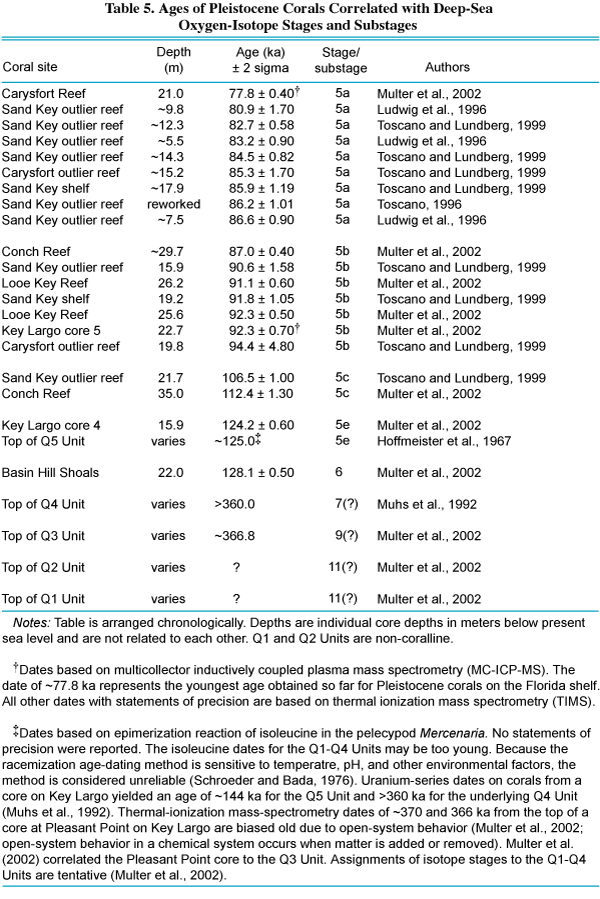FISC - St. Petersburg
Table 5. Ages of radiometrically dated Pleistocene corals from the Florida reef tract. Site locations shown on Summary Illustration index map. Ages at the bottom of the table have been modified from the isoleucine amino-acid dates of Mitterer (1974) and Perkins (1977) as shown in Lidz et al. (2003). Because the amino-acid age-dating method is sensitive to temperature, pH, and other environmental factors, the method is considered unreliable (Schroeder and Bada, 1976). Although discrepancies exist between dates on corals from the older Q3 and Q4 Units obtained by the more accurate uranium-series and δ18O age-dating methods (Fig. 37A), both of these dating methods also have limitations and neither is precise (see Muhs, 2002; Muhs et al., 2004). Nonetheless, both methods indicate the stratigraphic units are likely mid-Pleistocene (~340-300 ka and ~230-220 ka, isotope Stages 9 and 7, respectively). Comparison with Table 4 data shows that dates between ~77.8 (Multer et al., 2002) and 9.6 ka (Mallison et al., 2003) have not been obtained on corals landward of the Holocene shelf edge. These dates therefore bracket a period of time between Pleistocene isotope substage 5a and the Holocene (Fig. 37B), when a sea level lowered below the Florida shelf precluded coral growth on the shelf. Authors cited listed in References. For more information, contact Barbara Lidz.
|
Can't see the printable PDF version? Get the free Adobe Acrobat® Reader. |
